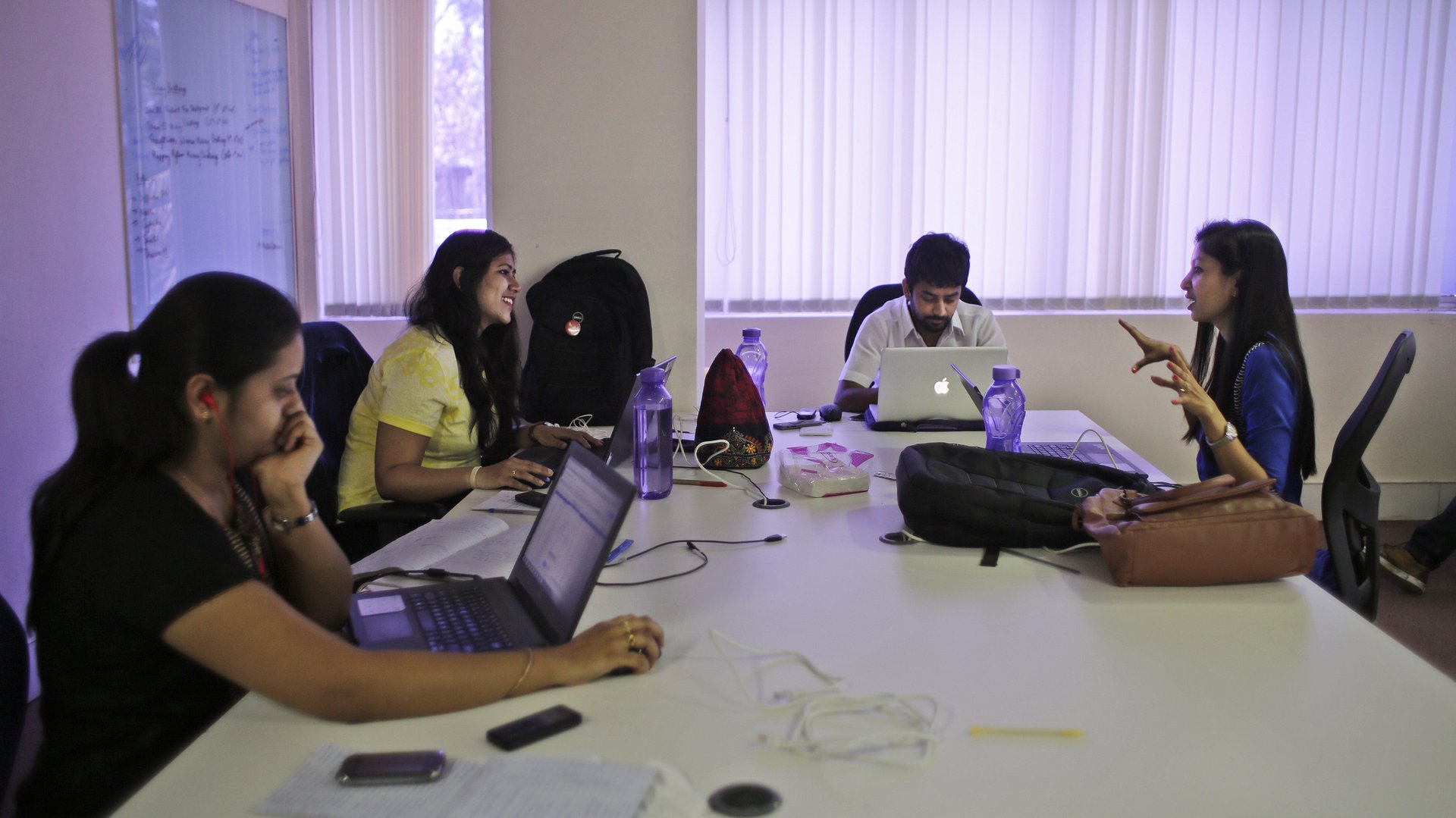Most Indian employees aren’t fully engaged at work, still they are better than anyone else
Indians are the most engaged at work compared to others around the world.


Indians are the most engaged at work compared to others around the world.
The country clocked the highest increase (by 5 percentage points) in the number of “fully engaged” workers between 2015 and 2018, according to a June 14 global survey by ADP Research Institute, which focuses on human capital management and human resource management.
China fared the worst, with a 13 percentage-point drop in the period, bringing employee engagement down to a dismal 6%.
ADP surveyed a random sample of 19,346 full-time and part-time employees across 19 countries, up from the 13 surveyed three years ago.
The results back earlier research showing multinational corporations (MNCs) enjoying much higher employee engagement rates in India than on their home turfs.
One thing that helps is collaboration. “Workers who say they are on a team are 2.3 times more likely to be fully engaged than those who are not,” ADP found. “Team workers believe in the importance of clear goals and objectives, open communication, clear roles and responsibilities, and a strong leadership.”
India has the highest share of workers working in one or more teams at their workplace, tied with Saudi Arabia.
Just “coming to work”
Yet, most Indian workers are still not fully engaged.
If 22% are “fully engaged,” it means more than three-quarters of Indians are still just “coming to work” instead of contributing all they can to their organisations, ADP says.
Even now, only a quarter of business leaders in India perceive employee engagement as a top priority. Most of them don’t know how to provide effective training to keep employees engaged. And mounting workplace stress is weighing down on morale and productivity, too.
Some other barriers are structural in nature. For instance, family-owned businesses, accounting for almost two-thirds of India’s GDP and half the workforce, tend to be patriarchal and not entirely meritorious, analytics company Gallup found. Legacy organisations—private and government ones—”have strong hierarchical structures that stifle innovation, misalign incentives and reward obedience more than outcomes,” the American firm said.
It’s in a firm’s interest to fix this engagement crisis. “A disengaged workforce costs the global economy billions of dollars annually,” ADP noted in its executive summary. “When employees are not fully engaged, organisations suffer.”
Companies with high engagement perform better on all fronts from higher stock prices to higher productivity to less absenteeism and churn to bigger sales and profits to better customer satisfaction, among other things.